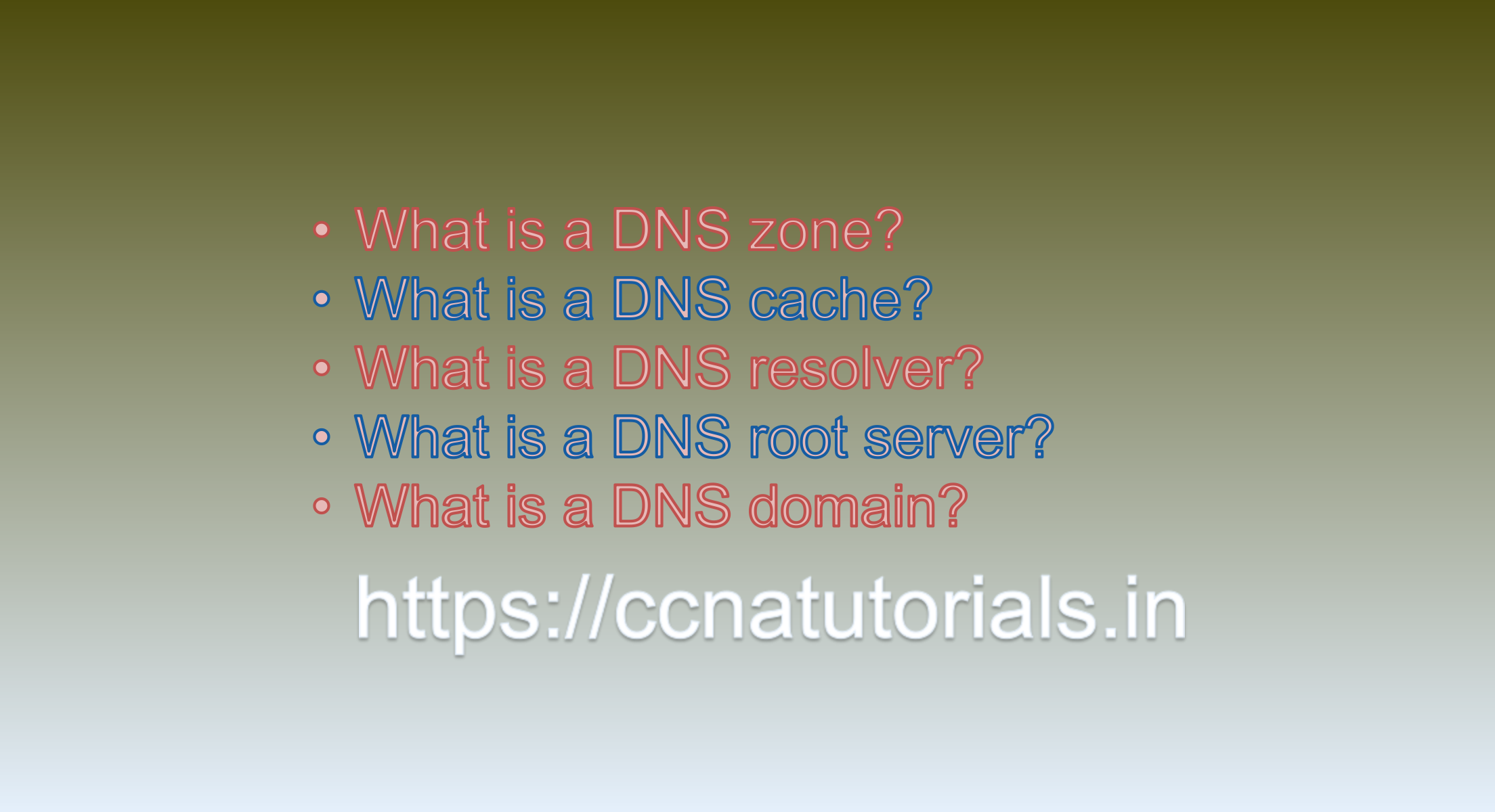Contents of this article
In this article, I describe some CCNA sample questions for practice before appearing in the CCNA 200-301 exam. The following questions are basic questions and related to the CCNA sample questions set 20. There are multiple sample questions set on this website for prior practice online. All questions are described with relevant answers. You can take the following questions and answer as reference for CCNA 200-301 exam. You may also need to do more practice with other websites and books to practice the CCNA sample questions set 20.
Question 1. What is a DNS zone?
A DNS zone is a portion of the global Domain Name System (DNS) namespace for which an organization or entity has administrative responsibility. It can be thought of as a container that holds information about a specific domain, such as the domain’s name servers and resource records.
A DNS zone is defined by a starting point, called the zone apex, which is usually represented by the domain name itself (e.g., example.com). The zone contains resource records that associate domain names with IP addresses, mail servers, and other information required for network communication.
DNS zones are typically used by organizations to manage and control their DNS infrastructure. They allow administrators to delegate authority for subdomains to other entities, set up redundancy by distributing DNS servers across multiple locations, and provide security by restricting access to certain parts of the DNS hierarchy. This is the answer to question 1 of CCNA sample questions set 20.
Question 2. What is a DNS cache?
A DNS cache is a temporary storage area on a device that contains information about recently accessed domain name system (DNS) records. When a device queries a DNS server to resolve a domain name to an IP address, the DNS server responds with the requested information, and the device stores this information in its cache. If the device needs to access the same domain name again in the near future, it can retrieve the information from its cache instead of querying the DNS server again. This can speed up the process of accessing websites and other network resources, as it reduces the need for repeated DNS queries. DNS caches can be found on various devices, including computers, routers, and DNS servers themselves. This is the answer to question 2 of CCNA sample questions set 20.
Question 3. What is a DNS resolver?
A DNS resolver is a software component or service that performs the task of resolving domain names to IP addresses. When a user types a domain name into their web browser, the browser sends a DNS query to a DNS resolver, which then searches for the corresponding IP address for that domain name. The DNS resolver can either have the IP address cached or it will query other DNS servers to find the IP address.
DNS resolvers can be implemented in a variety of ways, from standalone software applications to integrated services within operating systems or network devices. They are an essential component of the internet infrastructure and play a critical role in enabling users to access websites and other internet services. This is the answer to question 3 of CCNA sample questions set 20.

Question 4. What is a DNS root server?
The DNS root servers are a critical component of the Domain Name System (DNS) infrastructure. They are a set of 13 authoritative servers that store information about the top-level domains (TLDs) in the DNS hierarchy, such as .com, .org, .net, and so on. When a DNS resolver receives a query for a domain name that is not in its cache, it sends a request to one of the DNS root servers to find the authoritative server for the TLD in the domain name. The root servers respond with a referral to the appropriate TLD server, which can then direct the resolver to the authoritative name server for the specific domain name being queried. In this way, the DNS root servers facilitate the resolution of domain names across the internet. This is the answer to question 4 of CCNA sample questions set 20.
Question 5. What is a DNS domain?
In the context of DNS (Domain Name System), a domain is a hierarchical naming structure used to identify and locate resources on the internet. It is a group of related devices or resources that share a common suffix in their hostnames, such as google.com, microsoft.com, etc. A domain name consists of two or more parts, separated by dots, such as example.com, where “example” is the name of the organization or entity and “.com” is the top-level domain (TLD).
Each domain is managed by a DNS server that translates domain names into IP addresses, allowing devices to communicate with each other. Domains can be further subdivided into subdomains, allowing for more granular control and organization of resources. For example, the subdomain “www” in “www.example.com” represents the web server hosting the website for the “example.com” domain.
DNS domains are a critical component of the internet infrastructure, enabling users to access websites, send emails, and use other internet-based services. This is the answer to question 5 of CCNA sample questions set 20.
Conclusion for CCNA sample questions set 20
In this article, I described 5 questions with answers related to CCNA 200-301 exam. I hope you found these questions helpful for the practice of the CCNA 200-301 exam. You may drop a comment below or contact us for any queries related to the above questions and answers for CCNA 200-301. Share the above questions If you found them useful. Happy reading!!






